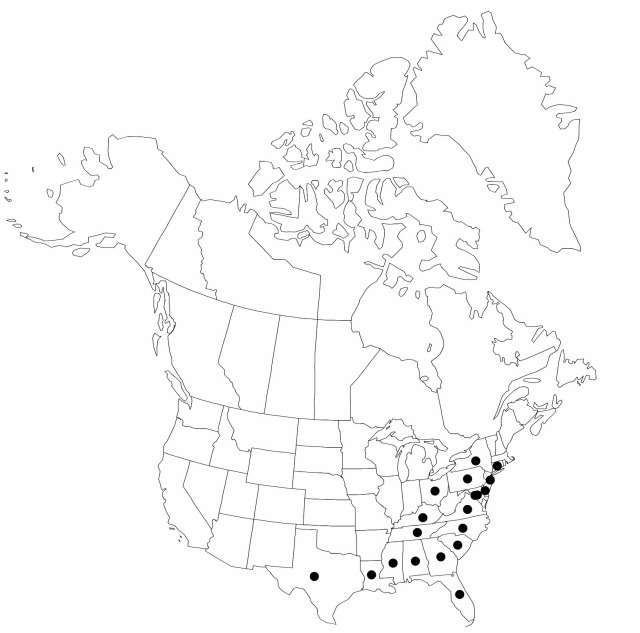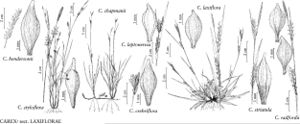Carex styloflexa
Amer. J. Sci. Arts 45: 174. 1843.
Culms densely tufted, central, ascending or lax, 24–82 cm × 0.8–1.6 mm. Leaves: basal sheaths light-brown to brown; sheaths green or yellow-green, 2–26 mm; blades ascending, green or yellow-green, midrib well developed abaxially, 2 lateral-veins well developed adaxially, flat, 18–44 cm × 12–14 mm, blade of overwintering leaves smooth abaxially. Inflorescences: peduncles of proximal spikes 0–12 cm, arising in proximal 1/3 of culm, distal lateral spikes not exerted; peduncles of terminal spike 0–2.8 cm; bracts 8–21 × 0.5–4 mm, blade of distal lateral spike linear, narrower than spikes; widest bract blade of distalmost lateral spike 0.5–3.4 mm wide. Spikes 3 (–4) per culm; lateral spikes 6–9 (–15) × 4–6 mm, distal ones separate; terminal spike 11–35 × 1.8–3 mm, exceeding distal lateral spike. Pistillate scales 2–2.5 × 0.8–1.2 mm, apex acute. Staminate scales 3.2–4.2 × 1–1.2 mm, margins hyaline or brown tinged, apex acute. Anthers 3.8–4 mm. Perigynia 4–20 per spike, closely to loosely overlapping, ratio of longer lateral spike length to perigynia number 0.8–3.4, aggregated, spreading, finely, conspicuously (22–) 25–32-veined, narrowly elongate ovate, 3.5–5.5 × 1.2–1.6 mm, 1.9–2.3 times as long as achene bodies; beak excurved, 0.5–1.7 mm. Achenes elongate-obovoid, 2.2–3.2 × 1–1.4 mm. 2n = 48.
Phenology: Fruiting spring.
Habitat: Wet, sandy, acidic soils, around springs, seeps, and small streams, under deciduous or mixed deciduous-evergreen forests
Elevation: 0–1000 m
Distribution

Ala., Conn., Del., D.C., Fla., Ga., Ky., La., Md., Miss., N.J., N.Y., N.C., Ohio, Pa., S.C., Tenn., Tex., Va.
Discussion
Selected References
None.
Lower Taxa
"shortened" is not a number."narrower" is not a number.No values specified.
